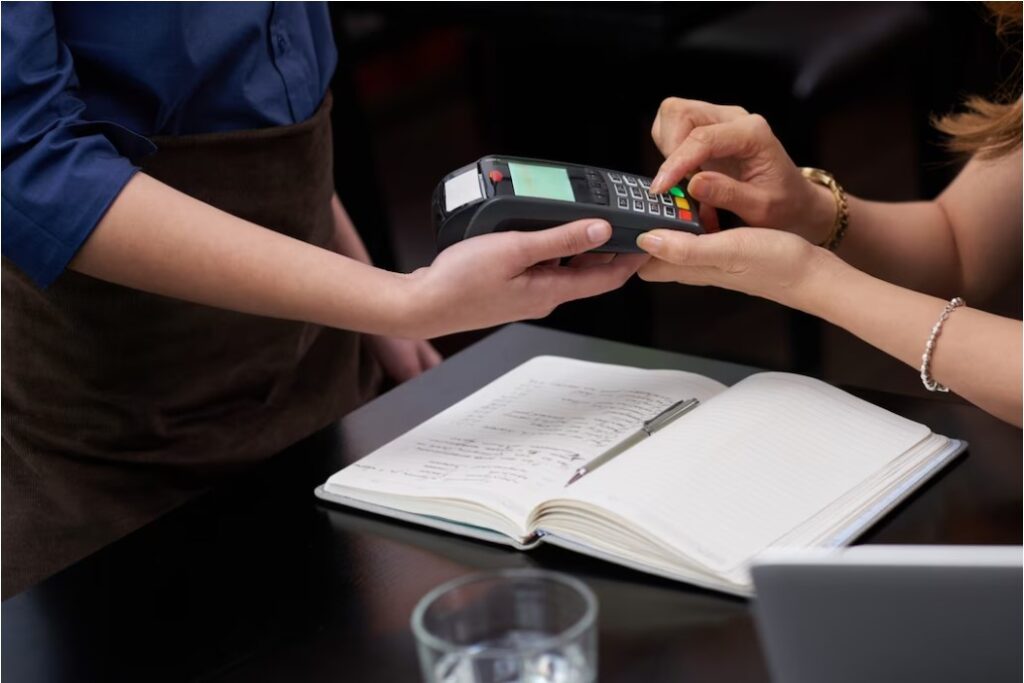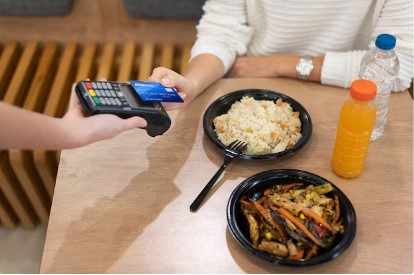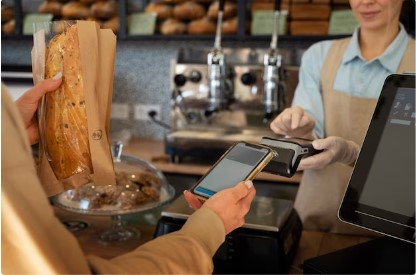Restaurant Credit Card Processing
Posted on September 28th, 2023

The Best Restaurant Credit Card Processing Solutions in 2023
In the fast-paced world of the restaurant industry, seamless and efficient payment processing is essential. As we step into 2023, restaurant owners are constantly seeking the best credit card processing solutions to enhance customer satisfaction, streamline operations, and boost revenue. With a plethora of options available, it can be challenging to pinpoint the ideal credit card processing service for your restaurant.
In this comprehensive guide, we’ll explore some of the best restaurant credit card processing solutions in 2023 and compare them to their competitors to help you make an informed decision.
Choosing the Best Restaurant POS Credit Card Processing System

Selecting the optimal restaurant POS credit card processing system is a pivotal decision for any dining establishment. At Value System POS, we provide expert guidance to simplify this crucial choice. Our website offers comprehensive reviews, comparison tools, and expert advice to help restaurant owners and managers make informed decisions. We evaluate key factors such as features, pricing, user-friendliness, and customer support.
Real-world testimonials from fellow restaurateurs and the latest industry news further assist in your decision-making process. Trust valuesystemspos.com to be your trusted partner in optimizing operations, enhancing customer experiences, and achieving success in the competitive restaurant industry.
Our top picks for credit card machines, many of which are suitable for restaurants, are featured in the best credit card machines & terminals for small businesses.
Restaurant Credit Card Processing: How it Works
The reason for credit card processing in restaurants is much the same as it is in virtually any other best retail POS system setting. Due to the differences in how each sort of restaurant is set up, the key prestige is the wide range of platforms that restaurants can employ.
There are two options for general retail: in-store and online. Mobile payments, ACH, and other options are available for service sectors.
However, depending on the business, you can have any number of these kinds of buildings or a combination of them all in restaurants. This means that a restaurant may serve its clients in the following forms:

Fast-food
Fast-casual
Dining
Fine dining
Pick up
Delivery
Food trucks
Catering
Pop-up
Customers can pay in a variety of ways, including at the register, the drive-through, the table, online, over the phone, or by giving their credit card to the waitress, who will then process the payment behind the scenes.
The majority of restaurants allow patrons to pay in a variety of ways, including at the table, over the phone, or by placing an online order and picking up their food later.
The Advantage of Credit Card Processing in Restaurants
Before delving into specific credit card processing solutions, let’s first understand why choosing the right one is crucial for restaurants.
Customer Convenience: In an era where cash transactions are on the decline, offering credit card payment options is essential for ensuring customer satisfaction and convenience.
Streamlined Operations: Efficient payment processing can speed up table turnovers and reduce waiting times, which, in turn, can lead to higher revenue for restaurants.
Security and Fraud Prevention: The right credit card processing solution can enhance security, protecting both customers and restaurants from data breaches and fraud.
Reporting and Analytics: Modern credit card processing services often come with built-in reporting and analytics tools, providing valuable insights into customer behavior and spending patterns.
Costs of Credit Card Processors for Restaurants
The costs associated with credit card processors for restaurants can vary depending on several factors, including the provider, the type of restaurant, transaction volume, and the specific services and features offered.
Most credit card processors charge a fee for each credit or debit card transaction processed. This fee is typically a percentage of the transaction amount (e.g., 2.5% of the sale) plus a fixed fee per transaction (e.g., $0.30 per transaction).
Some providers may charge a monthly subscription fee for using their credit card processing services. According to the provider and the type of service, this charge might range from a few dollars to several hundred dollars every month.
Hardware Costs: If your restaurant requires specific POS hardware or card readers, there may be upfront costs to purchase or lease this equipment. These costs can vary widely based on your hardware needs. In the event of a disputed transaction (chargeback), processors may charge a fee to investigate and manage the dispute.
Restaurants are required to maintain Payment Card Industry Data Security Standard (PCI DSS) compliance to ensure the security of cardholder data. Some processors charge an annual or monthly PCI compliance fee to cover the cost of compliance validation.
If you use an online payment gateway to process payments for online orders or reservations, there may be gateway fees associated with this service.
It’s essential for restaurant owners to carefully review the pricing structures and terms offered by credit card processors and choose a solution that aligns with their business model and budget. Pricing can vary significantly among providers, so it’s advisable to compare quotes and negotiate terms when possible to secure the best deal for your restaurant’s specific needs.
Features of Restaurant Credit Card Processing
Certainly, here’s a breakdown of the key features related to restaurant credit card processing, specifically focusing on POS hardware, online to-go orders, multiple payment methods, security, and third-party integrations:

POS Hardware:
Tablet-Based Systems: Many restaurants use tablet-based POS systems for order entry and payment processing. These systems are compact and allow for tableside ordering and payment, enhancing efficiency.
EMV Chip and Contactless Readers: POS hardware supports EMV chip card transactions and contactless payments, improving security and accommodating modern payment methods.
Online To-Go Ordering:
Online Ordering Integration: Restaurant credit card processing systems often integrate with online ordering platforms, allowing customers to place to-go orders and pay online seamlessly.
Menu Management: The system enables restaurants to update their menus and pricing for online orders in real-time.
Delivery Management: Some systems offer delivery management features, helping restaurants coordinate deliveries and track orders.
Multiple Payment Methods:
Credit and Debit Cards: Acceptance of major credit and debit cards is a fundamental feature, allowing customers to pay with their preferred payment method.
Contactless Payments: Support for contactless payment methods, such as NFC-enabled cards and mobile wallets, offers convenience and speed for customers.
Cash Handling: Some systems integrate with cash drawers for restaurants that still accept cash payments.
Split Payments: The system enables customers to split bills and make multiple payments if dining in a group.
Security:
EMV Compliance: EMV chip card support reduces the risk of card-present fraud by authenticating transactions securely.
PCI Compliance: Adherence to Payment Card Industry Data Security Standard (PCI DSS) ensures that cardholder data is protected and handled securely.
Encryption: Data encryption safeguards sensitive information during transmission, enhancing overall security.
Third-Party Integrations:
Accounting Software: Integration with accounting software streamlines financial processes and reporting.
Customer Relationship Management (CRM): CRM integrations help restaurants manage customer data and create personalized experiences.
Inventory Management: Integration with inventory management systems assists in tracking stock levels and optimizing menu offerings.
These features collectively empower restaurants to provide efficient, secure, and customer-friendly payment experiences while optimizing their operations and leveraging third-party tools to enhance various aspects of their business.
In Conclusion, Choosing the best restaurant credit card processing solution in 2023 depends on your specific needs and the size of your establishment. Each of the mentioned providers has its unique strengths and weaknesses, and the right choice will depend on factors such as your budget, technical expertise, and long-term goals.